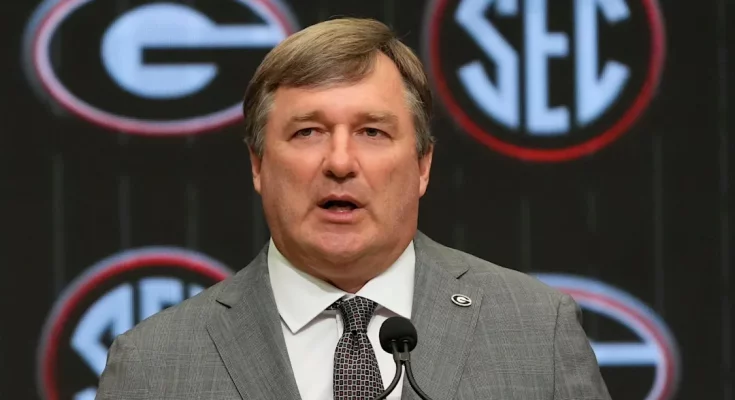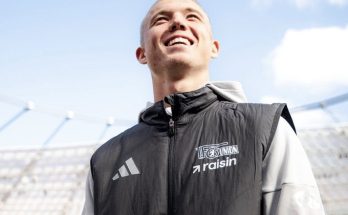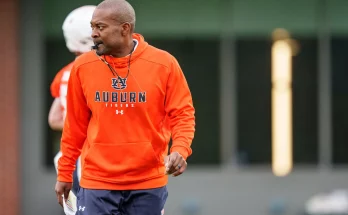The Georgia Bulldogs and Oregon Ducks are vying for a top 4-star recruit.
Myson Johnson‑Cook is one of the most exciting recruits in the 2027 class. Listed as a four‑star athlete prospect, he plays both running back and linebacker from Texas, and is ranked among the top 30 nationwide. Two programs, the Georgia Bulldogs and the Oregon Ducks, have emerged as the primary contenders in his recruitment, and the competition has heated up in recent weeks.⁸
Georgia and Oregon both value Johnson‑Cook’s rare blend of speed, physicality, and versatility. Kirby Smart’s staff at Georgia has emphasized using him as a hybrid threat—a physical playmaker who can line up on offense or defense and offer explosive ability in the backfield or off the edge. Johnson‑Cook’s visit to Athens reportedly impressed him, citing strong connections with Kirby Smart and running backs coach Josh Crawford, as well as an energy-filled environment that made him feel welcome.⁸
Oregon, meanwhile, pursued Johnson‑Cook aggressively under coach Dan Lanning, bringing him to Eugene in May and giving him exposure to the team environment—from football facilities to fan atmosphere. He said the Ducks “made me feel like a priority” through consistent contact and attention. He also enjoyed a baseball game in Eugene, where he saw firsthand how passionate Oregon fans are about their school.⁸ That experience stood out and helped push Oregon forward in the race.
The context of this rivalry goes deeper than just one athlete. Both Georgia and Oregon have had impressive 2025 recruiting cycles—Oregon recently signed a class that contained the highest blue‑chip percentage in the country, with 95 percent of their commits rated at least four stars. Georgia’s 2025 class lagged behind slightly, at 82 percent blue‑chip content.⁶ Winning Johnson‑Cook would help Georgia narrow that gap and reinforce its national recruiting momentum going into 2027.⁶
Johnson‑Cook is the No. 27 overall player nationally, the No. 2 athlete, and rated the No. 5 player in Texas according to Rivals composite rankings.⁸ Being from Texas means both programs are traveling to pull from elite talent in the nation’s top recruiting state. Building inroads in Texas could influence future recruiting battles beyond this single athlete.
Georgia’s case rests on culture and continuity. They are closing a strong in‑state recruiting class for 2026 and looking to build momentum from SEC dominance. Bringing Johnson‑Cook into the fold fits with Kirby Smart’s message of developing versatile leaders. He committed after visits with Smart and staff gave him confidence in playing early and developing at multiple positions.⁸ Meanwhile, Oregon is expanding into southern states more aggressively, and signing Johnson‑Cook would reinforce that footprint. Sperate emphasis on NIL and exposure made him feel prioritized, which he highlighted during interviews.⁸
Timing matters too. With Johnson‑Cook said to be naming finalists around mid‑June, both Georgia and Oregon have pushed staff involvement and unofficial visits to win his commitment. Georgia hosted a campus visit that left Johnson‑Cook impressed; Oregon’s hospitality in Eugene and consistent recruiting follow‑up gave him a strong connection feel.⁸ The decision could drop this summer, and whichever program lands him may gain momentum as the 2027 cycle begins to shape.
This rivalry is about more than one athlete; it’s about style and identity. Georgia sees Johnson‑Cook as a tough, two-way athlete who can anchor zone‑run fits or fill in linebacker rotations, offering physicality and reliability. Oregon sees him as a dynamic play‑maker who fits their faster tempo and position‑flexible offensive scheme. His ability to play multiple roles fits both programs’ visions—but whose system and environment will fit him best in his mind?
If Johnson‑Cook picks Georgia, it strengthens their SEC recruiting footprint into Texas and aligns with past success in winning top hybrid athletes. It also continues Kirby Smart’s recruiting pattern of staying connected with elite two‑way players. If Oregon secures him, it adds another high‑profile scorer to their West Coast class and further validates their expanded geographic reach and blue‑chip recruiting reputation. It also counters Georgia’s recent edge within that particular athlete profile.
Off-field questions also come into play. Both programs talk about development and quarterback exposure for playmakers, but Johnson‑Cook may weigh his opportunity to play both ways. Georgia could offer more early playing time if he treads linebacker or goal-line back roles; Oregon could offer more brand exposure in a fast-paced offense and strong NIL visibility west of Texas. It’s a close battle with different trade-offs depending on his priorities.
Watching both staffs over the coming weeks, it’s clear each is pouring energy into the recruitment. Georgia’s team visits and camp invites spiked after Johnson‑Cook’s visit, and Oregon maintained daily contact and a friendly phone relationship. Analyst coverage suggests the battle is neck‑and‑neck, with one insider predicting a very close decision based on who he felt most comfortable with during his official visits.⁸
When he commits, the decision will send ripples. Georgia would pick up another elite player in a recruiting class already deep in blue‑chip stars and doubling its Texas presence. Oregon would gain a player who moves like a high school running back but plays with linebacker tenacity—exactly the type of hybrid athlete they value in Lanning’s system. Either choice makes sense—but choosing between SEC tradition and Pac‑12‑Big Ten ambition may come down to personal fit for the recruit.
In summary, Myson Johnson‑Cook has narrowed his recruiting decision to Georgia and Oregon. He is a rare four‑star athlete who fits both programs well. Georgia leans on its tradition, culture, and connections in Texas to win him, while Oregon pushes geographic expansion, NIL momentum, and fan immersion in Eugene. When he announces his final decision—expected soon—it will be one of the most watched in the early 2027 cycle. The winner will gain not just a player, but recruiting prestige. The loser will still compete hard in future signings—but this race marks a high‑stakes clash between two elite programs battling for the same athletic blueprint.



